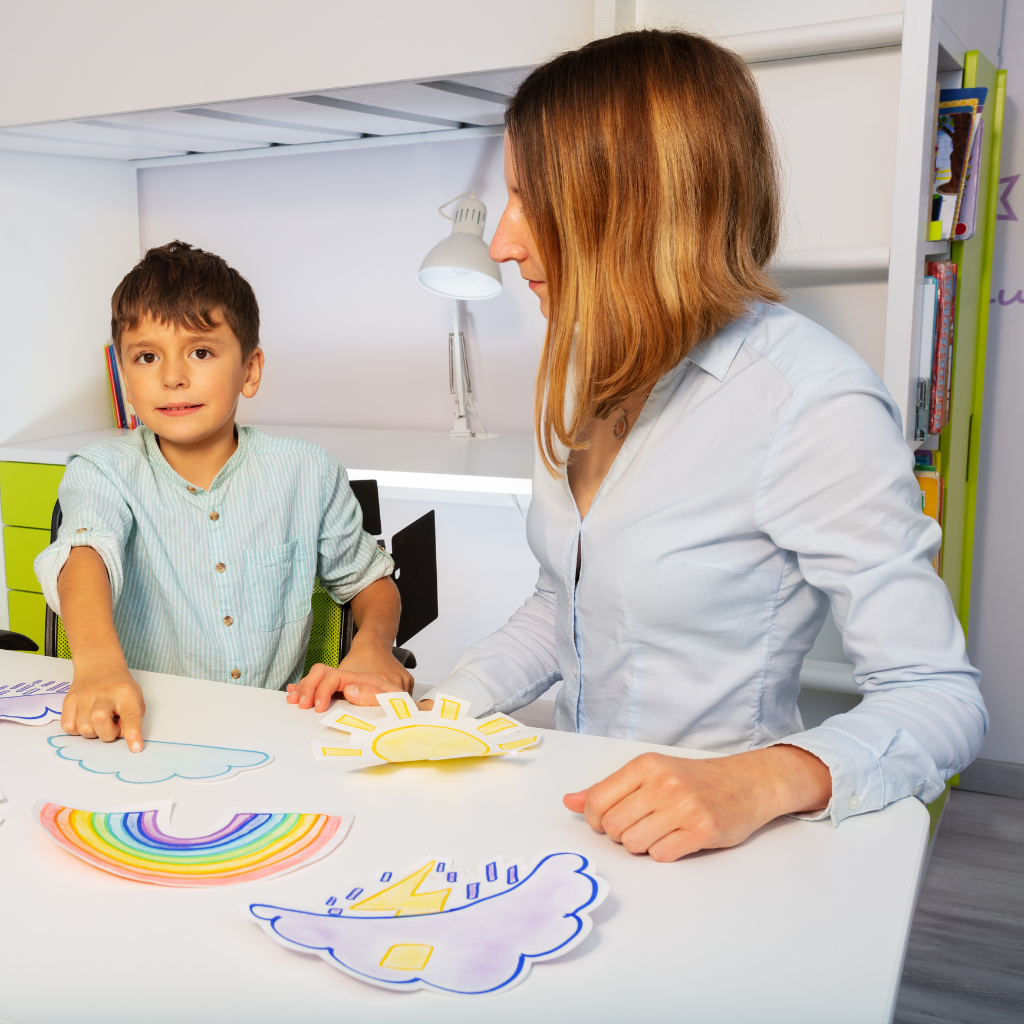Table of Contents
What does stimming look like in autism?
We all engage in self-stimulatory behaviors at times—whether it’s to relieve nerves, stress, or just out of habit. These behaviors can include tapping your foot, twirling your hair, or biting your nails. For most people, these actions are a way to manage emotions or stay focused. However, stimming in autism is beyond a simple action as it is part of the DSM-5 diagnostic criteria, and nearly 44% of individuals with autism experience some stimming, according to the American Psychiatric Association.
But what does stimming look like in autism, and how is it different from the habits we all have? While the behaviors themselves may be similar, like hand flapping, finger-snapping, or rocking back and forth—the difference lies in the reasons behind them, the intensity, and how often they occur. Moreover, for neurotypical individuals, these actions are usually subtle and “socially accepted.” However, for those diagnosed with Autism Spectrum Disorder (ASD), stimming can serve as a way to self-regulate in environments that feel overwhelming or confusing.
If you’re a parent or caregiver of a child with autism, you may wonder if you can eliminate this behavior of your child. The truth is, you can’t completely stop stimming because everyone engages in it! Even if one you can reduce it, it’s likely another will take its place—and the next one could be less desirable.
So, let’s dive deeper into understanding stimming in autism and how you can support your child in this blog by ABA Centers of Connecticut.
Why Do Children with Autism Engage in Stimming?
The reasons children with autism engage in stimming behaviors can vary from person to person, but there are common factors that often trigger or maintain these behaviors:
Sensory Overload: Children with autism often experience the world differently, feeling overwhelmed by bright lights, loud noises, or even certain textures. Stimming helps them focus or block out these stimuli, allowing them to regain control over their environment.
Emotional Regulation: When children with ASD experience heightened emotions—such as excitement, frustration, or anxiety—stimming can help them manage and regulate those feelings. Repetitive actions like rocking or hand-flapping can create a sense of comfort and help the child regain emotional balance.
Expression of Excitement: Just like anyone else, children with autism stim when they’re excited or happy. However, their excitement may be expressed more visibly, such as jumping up and down, clapping, or repeating words or sounds.
Routine and Predictability: Some stimming behaviors might also correlate with routines. Repetitive actions can offer predictability and control in a world that often feels chaotic or unpredictable for a child with autism.
Types of Stimming in Autism

Self-stimulatory behaviors can take many forms, and it’s essential to recognize that they vary from child to child. Some of the most common types of stimming behaviors in individuals on the spectrum can include:
- Visual Stimming: Repeatedly watching objects spin, flicking fingers in front of the eyes, or staring at lights.
- Auditory Stimming: Making repetitive sounds, such as humming, grunting, or repeating certain words or phrases.
- Tactile Stimming: Rubbing or tapping surfaces, feeling specific textures, or repetitively touching objects or body parts.
- Vestibular Stimming: Rocking back and forth, spinning in circles, or bouncing.
- Proprioceptive Stimming: Pushing against walls, jumping up and down, or squeezing into tight spaces.
Should You Eliminate Stimming?
When parents and caregivers of children with autism observe and recognize stimming behaviors, they ask whether or not they should eradicate these actions, and our answer will always be: it depends.
Stimming is a natural behavior that everyone engages into some extent, whether consciously or not. As said previously, stimming plays a crucial role in managing sensory sensitivities and emotional regulation for children with autism. Attempting to stop stimming behaviors altogether can sometimes lead to increased anxiety or frustration, as the child may lose a valuable coping mechanism.
However, it’s essential to recognize that not all stimming behaviors are harmless. In cases where stimming is causing physical harm, hindering learning, or affecting social interactions, it may be beneficial to address and modify those specific behaviors. The goal is not to eliminate stimming but to manage and reduce disruptive or harmful behaviors while supporting the child’s overall well-being.
Instead of focusing on eradication, it’s more effective to understand what triggers the stimming and explore ways to support your child in managing those triggers. By doing so, you can help them navigate their sensory and emotional experiences while maintaining their comfort and safety.
How ABA Therapy Can Help
Now, in cases where self-stimulatory behaviors are impeding learning or otherwise affecting the child’s development, it is advisable to search for professional guidance. Therapists can work to decrease or replace challenging conduct with less invasive behaviors.
Clinical experts always recommend applied behavior analysis (ABA) to address the many traits of autism. This behavioral approach involves first identifying the root cause of the behavior, then evaluating the best way to reduce it, and finally, identifying alternative behaviors that do not disrupt the patient’s development.
One way ABA therapists can achieve significant changes is through positive reinforcement and gradual teaching, which breaks down the skill into small, understandable steps for greater understanding and future practice in all of the child’s environments.
Learn More About Autism Care with ABA Centers of Connecticut
As parents and caregivers, it’s essential to understand that stimming is not something to fear or eliminate. Instead, learning to support your child’s sensory needs and working with professionals can ensure your child thrives in a way that respects their individuality.
At ABA Centers of Connecticut, our team works with families to develop individualized treatment plans for children with autism. Through ABA therapy, we help parents understand their child’s stimming behaviors and how to create routines that support their sensory needs. Additionally, ABA sessions can introduce valuable skills that can replace less desirable stimming behaviors with more functional alternatives when needed.
Our experienced therapists at ABA Centers of Connecticut provide the following:

- Official autism diagnosis
- Early intervention services
- Both in-clinic and in-home ABA therapy for kids and teens
By working closely with families, we help children build critical skills that will support them in everyday life while respecting their need for self-regulation through stimming.
Call us at (844) 395-0448, or contact us online to verify your insurance benefits and explain how ABA therapy can boost the confidence of you and your loved one on the spectrum.









